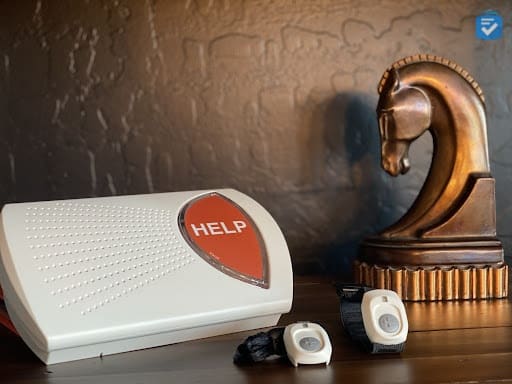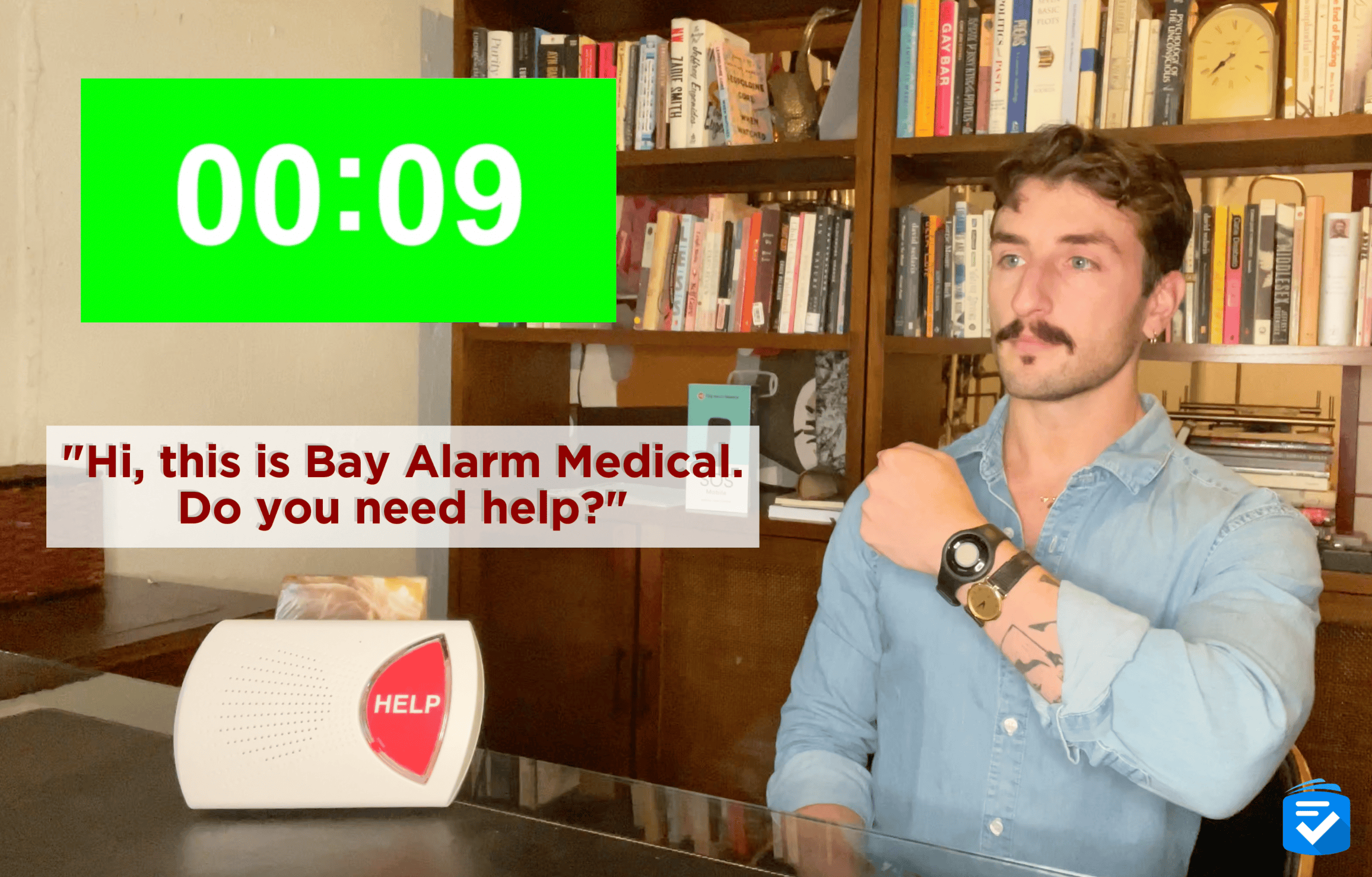Medical Alert Systems with Bluetooth
Traditional medical alert systems consist of a help button and a base unit, the latter being connected through either cellular or landline service. When you need help, just push the button on the base unit or the pendant, and emergency services will be contacted.
Recently, however, Bluetooth-enabled medical alert systems have shaken up this formula. These devices still utilize a help button, but they do away with the base unit, replacing it with a smartphone to relay distress signals.
Once your smartphone has “paired” with the medical alert device, it stays paired for as long as they are within range of each other and are turned on. As soon as the panic button is pressed, a call for help (sometimes along with a physical location) will be sent via your smart device.
Note: Most Bluetooth medical alert systems are app-driven, so your family members or caregivers need to download relevant apps for the device to send alerts effectively. This also means they’ll likely want a suitable smartphone.
Bluetooth-enabled medical alert systems make it affordable, speedy, and easy to share emergency information, which could very well save lives. That said, these devices are not for everyone. Here are my main takeaways from testing Bluetooth medical alert systems.

Pros and Cons of Bluetooth Medical Alert Systems
Pros
- Generally, Bluetooth medical alert systems cost less than traditional ones, and they often don’t require monthly subscription charges.
- No wires, making for an easy setup and hassle-free use.
- No modems or routers are required, as these systems will use the cellular signal of your phone.
- Unlike Wi-Fi, which can be stifled by walls, Bluetooth signals can travel through surfaces.
Cons
- Bluetooth’s connection range is about 30 feet, meaning that you’ll likely have to keep your smartphone on your person.
- Smartphones generally last a day on a charge, meaning you’ll have to charge your device daily in order to use your system.
- Microwaves and other electronics can interfere with the Bluetooth connection.
The Best Bluetooth Medical Alert Systems
As with any emerging technology, Bluetooth medical alert systems are constantly entering the market. Here are some of our favorites.
V.ALRT
This wearable medical alert device syncs with your smartphone, powered by Bluetooth 4.0 technology. Worn as either a pendant or wristband, the V.ALRT help button will send text messages to three pre-selected contacts and then initiates calls through your smartphone.
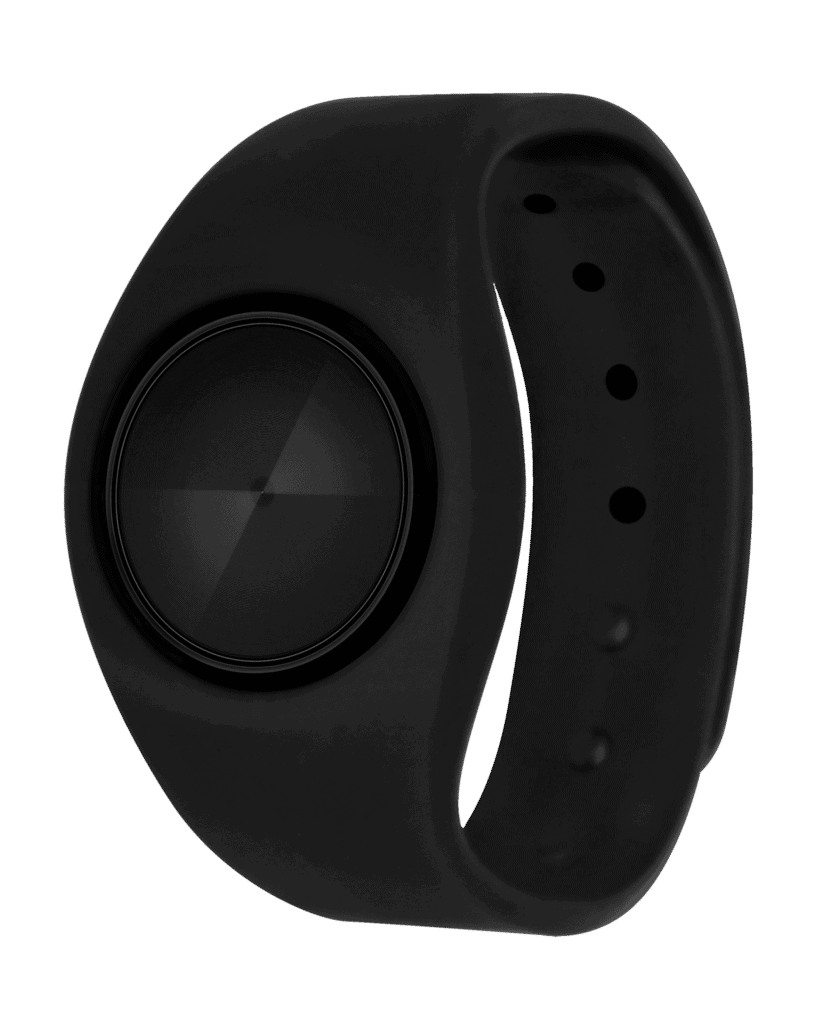
In the event of an emergency, it can also be pressed to sound an alarm. Additionally, the water-proof device comes with an automatic fall detection feature which immediately sends an alert and GPS coordinates to your emergency contacts when a fall is detected.
Remember: Always press the panic button if you are physically able to. This is because fall detection technology, across brands, isn’t 100 percent accurate so you must not wholly depend on it.
It’s also useful to note that V.ALRT has a battery life of up to one year. Priced between $39.99 and $44.99, this medical alert device is highly affordable. And unlike other cellular medical alert systems, V.ALRT does not have any monthly service fees, meaning a one-time payment is all that is required.
MyNotifi
Want a simple Bluetooth-enabled medical alert device that alerts family, friends, and emergency contacts? Then, consider MyNotifi’s buttonless fall detection unit ($99). This wearable device, with a range of up to 100 feet, is ideal for older adults who have a tendency to slip or lose their balance. It can be worn with a belt or shirt clip and will automatically text a customized message and your precise location to emergency contacts, in case of a fall. If you prefer a more traditional help button, MyNotifi also offers a wristband variant for $199.
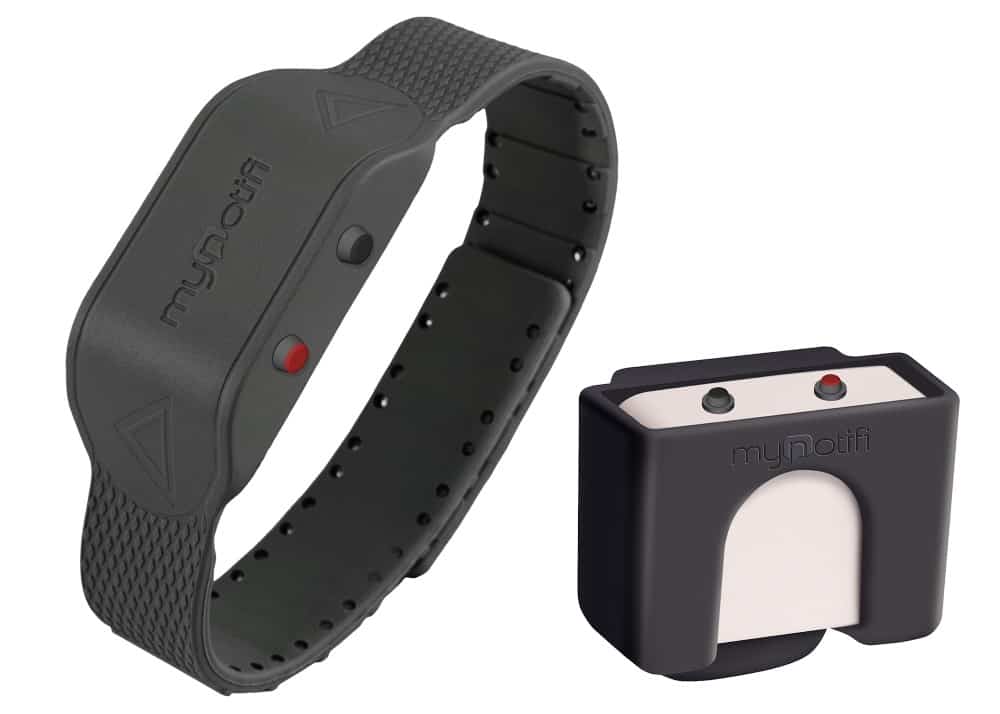
Both of these devices have battery lives of 24-48 hours, meaning you’ll want to charge them daily. While this is definitely abnormally short for medical alert systems, it shouldn’t be too much of an issue, considering your smartphone will need a similar level of charging.
MyNotifi also doesn’t require any subscription costs. Once you purchase your device, you simply need to download the app, which is free.
Silent Beacon
Here is a personal safety device that, once pressed, will call emergency contacts and send silent alerts or real-time GPS location. It also allows you the freedom to choose which phone number you wish to call during an emergency.
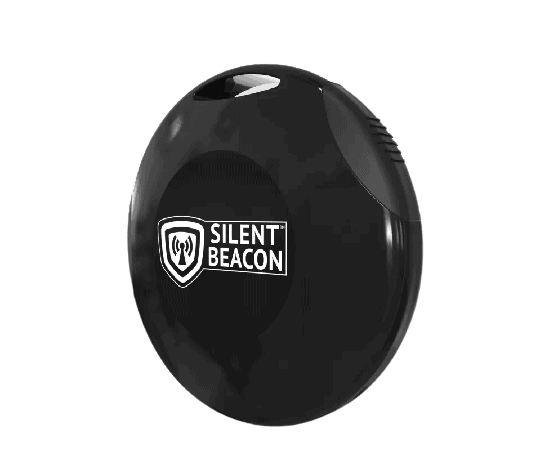
Another one of Silent Beacon’s helpful features is the built-in Bluetooth tracker which will show the exact location of anything that the beacon is attached to. So, no more losing your car keys or other little things. This feature is especially relevant since five to eight percent of people aged 60+ are seen to exhibit signs of dementia.
Like the other Bluetooth medical alert systems, Silent Beacon charges no monthly fee. The $99 you’ll pay for the panic button is all you’ll need to worry about.

Bluetooth Medical Alert Systems Compared
| V.ALRT | MyNotifi | Silent Beacon | |
|---|---|---|---|
| Cost | $39.99 | $99 – $359 | $99.99 |
| Range | 75 to 300 feet | 100 feet | 50 to 100 feet |
| Warranty | One-year limited warranty | Two-year limited warranty | One-year limited warranty |
| Professional Monitoring | No | No | Yes |
| Fall Detection | Yes | Yes | Yes |
| 30-Day money-back guarantee | Yes | Yes | Yes |
| Eligible for Medicare coverage | No | Yes | No |
Recap
In the United States, someone over the age of 65 falls every second. To prevent any further injuries, Bluetooth medical alert systems (paired with compatible smartphones) can provide the perfect solution. Not only are these devices cost-effective and energy-efficient, but they also offer you a much wider mobility range than traditional landline systems.
Frequently Asked Questions
-
Are there any distance limitations to Bluetooth senior alert devices?
With Bluetooth medical alert systems, your smartphone will function as the base unit. With this in mind, your help button will need to be within 30 feet of your smartphone, otherwise, the Bluetooth connection will likely not reach.
-
Will Medicare cover the cost of my Bluetooth senior alert device?
In some cases, Medicare will cover the cost of medical alert devices, including some Bluetooth systems. To ensure you get coverage, you’ll need to get a prescription from your doctor.
-
Can Bluetooth medical alert systems support professional monitoring?
The beauty of Bluetooth systems is that you don’t need to depend on call center agents for support in times of need. Instead, the Bluetooth technology ensures that your loved ones or 911 are alerted in case of an emergency. For added peace of mind, you may consider devices (such as Silent Beacon) that offer reliable, 24/7 monitoring service at an additional cost.
-
What is the fall detection feature in Bluetooth medical alert systems?
V.ALRT and MyNotifi are two brands that come with the fall detection feature, which is particularly useful if you are unable to press the panic button after a fall. The device’s algorithm ensures that the falling motion is automatically detected and your caregivers are immediately alerted.



